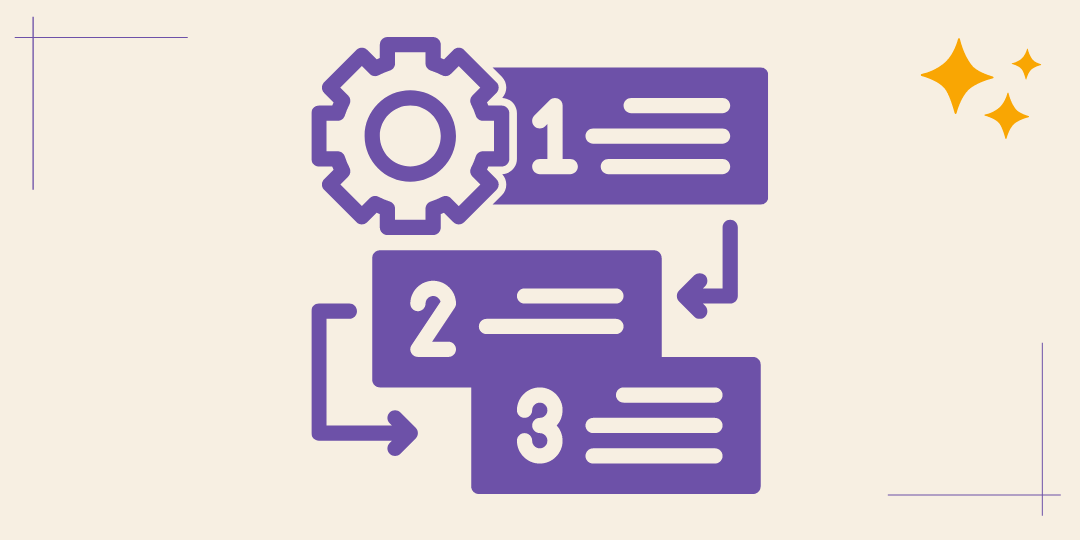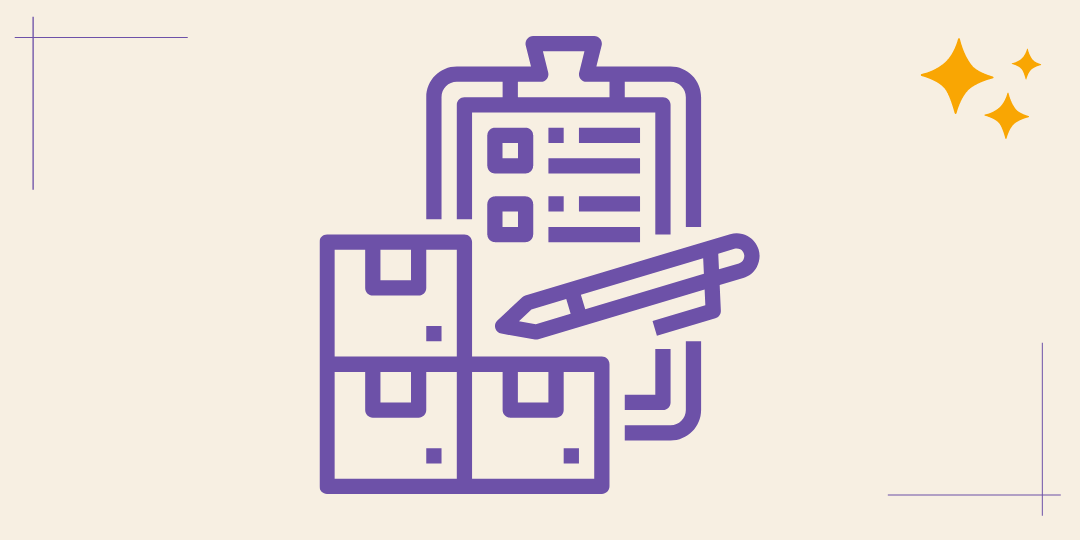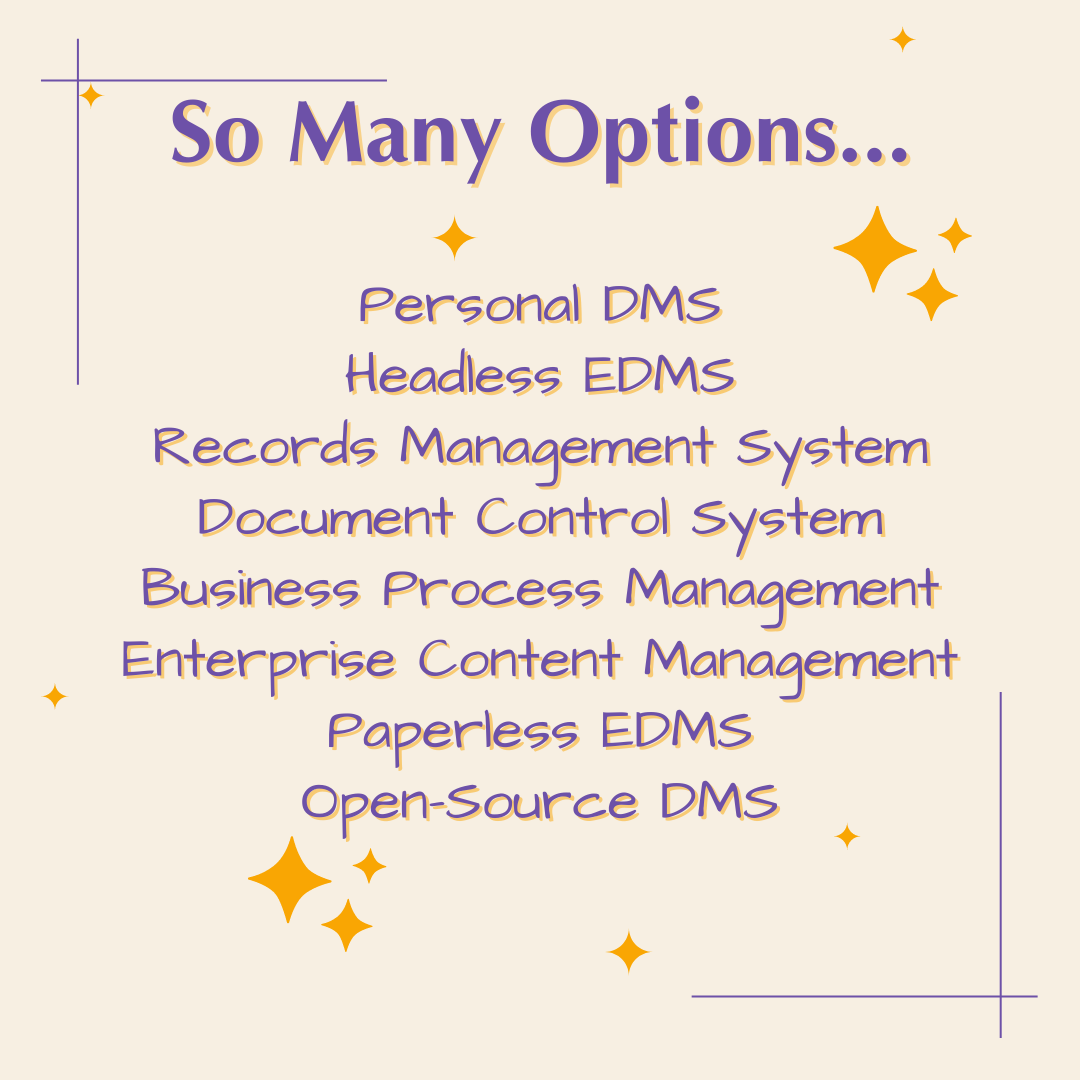There Are So Many Options in Document Management
As any web search can reveal, there are many document management systems available, with different approaches and combinations of features. The product category of document management is very broad, ranging from personal document management such as receipt scanning desktop applications to enterprise content management systems that provide complete workflow management across multiple services and vendor platforms.
There are also a variety of specializations, such as optical character recognition, records management, and business process management, and large variations in delivery models, such as proprietary software-as-a-service products or open-source self-hosted applications.
Aside from budgetary and operational considerations, a document management solution that does not meet the day-to-day needs of its users may ultimately fail in its adoption.
That’s why it’s important to consider your requirements before beginning to investigate the product offerings available for managing documents and enterprise content.
Determining your requirements is usually done through a Needs Assessment, a systematic process for determining and addressing needs by examining the gaps between the current condition and the preferred end condition.
In most cases, you will find more requirements, or wants, than you can reasonably fulfill, at least as part of your initial solution. Understanding the full extent of your needs as well as understanding your users and other stakeholders are keys to determining which needs should be prioritized.
Our Needs Assessment Framework for Document Management or Enterprise Content Management Systems
When it comes to document management and enterprise content management needs, the following steps can be taken to complete an assessment:
-
Gather your users and other stakeholders
For a document management solution, there may be both internal and external users, and this could include stakeholders such as governmental agencies or licensing bodies.
While traditionally this could mean gathering stakeholders around a whiteboard, an asynchronous process can work well, with videoconferencing and a shared collaborative document.
-
Study your current workflow and your desired workflow, and the gaps that may exist between those two states
Document management includes the capture, storage, classification, transformation, and retrieval of documents, which may follow several workflows as the data is imported into the system, processed, and possibly exported as electronic files or hardcopy reproduction.
It’s essential to keep track of each step of the existing workflows, to ensure that no functionality is lost if workflows are being replaced by new processes and/or software.
-
Review your existing software and processes, and how they may be utilized to fill the identified gaps, particularly the highest-priority gaps
Document management usually involves a mix of process and software for its workflows. In the case of enterprise content management, these workflows would increase in complexity with the scope of management.
-
Assess the resources available to create or acquire new software and processes, whether those are financial resources or people resources, and consider any time constraints or opportunity costs associated with filling the gaps while still meeting your needs that are already being met by the current workflow
Document management may include various components including hardware such as scan-to-email printers, vendor software, manual process, and custom applications. Every resource required to build or set up, maintain, and utilize these components should be considered.

-
Prioritize the currently-met needs and the gaps (i.e., your combined workflow needs) based on importance and impact, possibly by scoring each need based on the following criteria:
-
Critical (or “show stopper”), where the solution cannot be considered complete without meeting this need: 10 points
-
Required, so the need will either have to be met by the solution or met another way: 7 points
-
Useful, so if this need is not met, it can be excluded with some non-crucial loss of effectiveness: 5 points
-
Helpful, where a need would be nice to have, but wouldn’t have a major effect on the outcome: 2 points
-
Indifferent, where a need has been evaluated to not be needed at all: 0 points
-
Consider removing needs that are indifferent or only ranked to be helpful, as well as any non-critical needs (i.e., not “show stoppers”) that may not be achievable with the resources available
In Document Management and especially in Enterprise Content Management, the sheer number of possible features usually leads to an overabundance of potential needs, i.e, a long list of document management features that look to provide value, and likely more needs than can be met within the scope of the needs assessment.
For instance, document collection can include any number of document import functionality through various integrations; while being able to import documents from every tool the organization has considered using, ensuring that the solution provides an import that has not yet been confirmed as part of a future workflow may take away time and attention from more essential needs during the assessment, not to mention resources during the solutioning phase.

-
Build a list of solutions, such as vendor products and/or internal application development, as well as process improvements; try to be realistic about whether your current resources are adequate to implement each possible solution, i.e., that you can afford the licensing, development, deployment, and adoption costs in time, money, and people resources
If possible, you should consider various delivery models, including off-the-shelf solutions, custom development by internal teams or external service providers, as well as determining if there are manual processes or workarounds to meet some gaps, at least in the near term.
-
Score each solution against your prioritized needs, based on how well the solution meets each need:
-
Meets your requirements: 5
-
Partially meets your requirements: 2
-
Does not meet your requirements: 0
While the highest total may be the closest match to your needs, other high-scoring solutions should still be considered, as each will require a different mix of resources to implement, and your other strategic priorities and their costs should be weighed against the top-scoring solutions
Try Our Needs Assessment Worksheet Template
If you are considering a Needs Assessment, you can view and make a copy of our
Needs Assessment Worksheet Template.
What Happens After a Needs Assessment Has Been Completed?
Once the assessment has been completed, there should be a shortlist of solutions, which could include vendor software, internal projects, new processes, professional services, or a combination of many of these items.
The next step is to document the findings regarding this shortlist of solutions, along with a description of each solution, in order to begin conversations with any vendors or internal and external resources that may be required for one or more of these solutions.
Once conversations have been conducted, the stakeholders should be involved in the final decision-making process before the winning solution has been selected.
Conclusion
With so many available options for solutioning a document management or enterprise content management system, it’s essential to spend time analyzing and assessing your needs before beginning conversations around a specific solution.
 FormKiQ vs. Off-the-Shelf Software and Less Flexible SaaS When is FormKiQ a better choice than Off-the-Shelf Software and Less Flexible SaaS?
FormKiQ vs. Off-the-Shelf Software and Less Flexible SaaS When is FormKiQ a better choice than Off-the-Shelf Software and Less Flexible SaaS? FormKiQ vs. Building It Yourself How does FormKiQ save time over custom in-house solutions?
FormKiQ vs. Building It Yourself How does FormKiQ save time over custom in-house solutions? Use Cases FormKiQ works for small and large workflows, across all verticals and industries.
Use Cases FormKiQ works for small and large workflows, across all verticals and industries. FormKiQ For Teams Find out how FormKiQ can work for your team
FormKiQ For Teams Find out how FormKiQ can work for your team FormKiQ For Industries Discover the advantages FormKiQ can bring to your industry
FormKiQ For Industries Discover the advantages FormKiQ can bring to your industry Blockchain and Decentralized Storage Leverage web3 technologies including proof of work and distributed systems for document control and data privacy
Blockchain and Decentralized Storage Leverage web3 technologies including proof of work and distributed systems for document control and data privacy Content and Digital Asset Management Integrate with your preferred web content management system while leveraging FormKiQ for managing your digital assets
Content and Digital Asset Management Integrate with your preferred web content management system while leveraging FormKiQ for managing your digital assets Document Management Module Integrate all of the required functionality of a document management system into an existing software solution
Document Management Module Integrate all of the required functionality of a document management system into an existing software solution Integration with QMS or LIMS Add missing functionality for your Quality Management or Laboratory Information Management by integrating with FormKiQ
Integration with QMS or LIMS Add missing functionality for your Quality Management or Laboratory Information Management by integrating with FormKiQ Job Application Form Receive applications, including cover letter and resume attachments, and import into an existing HR Management System
Job Application Form Receive applications, including cover letter and resume attachments, and import into an existing HR Management System Legal Discovery Tool Find information quickly by combining full-text search with AI-powered document classification
Legal Discovery Tool Find information quickly by combining full-text search with AI-powered document classification The Paperless Office: Digital Document Processing Collect, process, and store paper and digital documents, allowing for archival, integration, and future recall
The Paperless Office: Digital Document Processing Collect, process, and store paper and digital documents, allowing for archival, integration, and future recall Product Leasing System Process client lease applications, including a credit check and approval workflow
Product Leasing System Process client lease applications, including a credit check and approval workflow Company-Wide Break down the silos in your organization with a centralized control center for documents, ready for integration with any and all systems
Company-Wide Break down the silos in your organization with a centralized control center for documents, ready for integration with any and all systems Engineering and Product Reduce development time and agony with battle-tested components for your applications
Engineering and Product Reduce development time and agony with battle-tested components for your applications Finance and Accounting Process paper and electronic invoices and receipts, ready for integration with your important systems
Finance and Accounting Process paper and electronic invoices and receipts, ready for integration with your important systems HR and Recruiting Build and support your people across the organization by integrating with your essential tools
HR and Recruiting Build and support your people across the organization by integrating with your essential tools IT and InfoSec Provision a secure document store with the encryption and controls needed for compliance and protection
IT and InfoSec Provision a secure document store with the encryption and controls needed for compliance and protection Legal Manage and safeguard contracts and other essential documents across systems
Legal Manage and safeguard contracts and other essential documents across systems Marketing Add better discovery and reliability to digital assets and other essential content, while enabling integration with a web content management system
Marketing Add better discovery and reliability to digital assets and other essential content, while enabling integration with a web content management system Sales Keep track of sales assets and contracts inside and outside of your CRM and other tools
Sales Keep track of sales assets and contracts inside and outside of your CRM and other tools Accounting, Financial Services, and FinTech Standardize financial documents, metadata, and workflows across systems, teams, auditors, and clients
Accounting, Financial Services, and FinTech Standardize financial documents, metadata, and workflows across systems, teams, auditors, and clients Education, Training, and EdTech Integrate Learning Management Systems with other essential applications and tools
Education, Training, and EdTech Integrate Learning Management Systems with other essential applications and tools Healthcare, Life Sciences, and MedTech Combine secure and compliant records management with laboratory information management systems
Healthcare, Life Sciences, and MedTech Combine secure and compliant records management with laboratory information management systems Law Practices and Legal Services Ensure efficient legal discovery and case management
Law Practices and Legal Services Ensure efficient legal discovery and case management Logistics and Transportation Provide a robust and customized solution for fleet management or other logistics needs
Logistics and Transportation Provide a robust and customized solution for fleet management or other logistics needs Manufacturing, Production, and Utilities Control and distribute essential documents and standard operating procedures within and between facilities, partners, and clients
Manufacturing, Production, and Utilities Control and distribute essential documents and standard operating procedures within and between facilities, partners, and clients Online Entertainment, Gaming, and Gambling Provide the required compliance documents to partners, customers, and government agencies
Online Entertainment, Gaming, and Gambling Provide the required compliance documents to partners, customers, and government agencies Professional and Technical Services Ensure that clients, inspectors, and subcontractors are aligned with consistent document control
Professional and Technical Services Ensure that clients, inspectors, and subcontractors are aligned with consistent document control Tech Startups Build robust document management functionality into your disruptive product
Tech Startups Build robust document management functionality into your disruptive product












